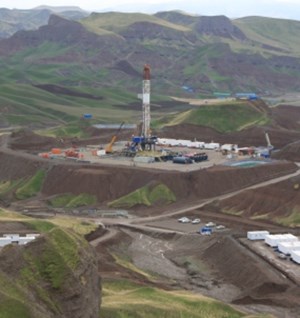MOL and O&GD have discovered a new oil field at a depth of approximately 2,400 m near Galgahévíz, Hungary. The well, named Galgahévíz-4, is capable of producing approximately 1,000 bopd, which is processed at the Danube Refinery in Százhalombatta.

Image: MOL Group
The partners began drilling the Galgahévíz-4 well in Galgahévíz, which is part of the “Mogyoród” concession area, at the end of May, and reached its target depth of 2,400 m in 37 days. Following successful tests, the well was put into production and is capable of producing approximately 1,000 barrels of crude oil per day. O&GD and MOL share the extracted volume in a 51%-49% ratio. The drilling was carried out by MOL’s subsidiary, Rotary Zrt., using the R-69 drilling rig.
“The new deposit contributes significantly to Hungary’s security of supply, as domestic production reduces import dependency,” said Dr. György Bacsa, COO of MOL Hungary. “Uncertainties surrounding supply routes also confirm that the more pipelines there are in the region, the more certain it is that there will always be enough energy. However, the best source is always domestic, which is why MOL treats hydrocarbon exploration in Hungary as a priority.”
In addition to the joint discovery with O&GD, MOL has recently discovered hydrocarbons in several locations in Hungary: drilling the Vecsés-2 in November 2022, Vecsés-1 in May 2024, and Vecsés-3 in November 2024 proved successful. In March 2025, MOL discovered oil in the Transdanubia region, near Somogysámson. In addition, it completed 25 successful drillings as part of the “shallow gas” program launched in 2019.
MOL is the largest hydrocarbon producer in Hungary, producing from nearly 1,300 oil and natural gas wells. In 2024, MOL accounted for 47% of domestic oil production (nearly 600,000 tonnes) and nearly 80% of natural gas production (nearly 1.5 billion cubic meters). Hungary is also the most significant country in MOL Group’s oil and gas production portfolio, currently representing approximately 39% of the total production. The Galgahévíz-4 well contributes approximately 4% to MOL’s crude oil production in Hungary.
The new discovery coincides with the 60th anniversary of the Algyő field, where oil and natural gas production began in 1965. The field has proven to be the strongest and most stable pillar of Hungary’s supply security, with nearly 1,000 hydrocarbon wells drilled over the years. Although known reserves are depleting, Algyő is significant to Hungary’s energy supply to this day, as the field currently provides one-tenth of the country’s total natural gas demand and five percent of its crude oil demand. In the 1980s, at the peak of production, this ratio reached 70%.
Today, the site’s role is gradually transforming in line with sustainability and energy transition: in addition to hydrocarbon extraction, renewable energy production and storage are becoming increasingly important. Increasing the share of renewable energy sources alongside fossil fuels is crucial for the smart green transition, which is one of the key elements of MOL Group’s long-term SHAPE TOMORROW strategy. To this end, MOL is building a 37.4 MWp solar park and an associated electricity storage system with 40 MWh energy storage capacity at its Algyő site. The investment enables the MOL facilities in Algyő to achieve electricity independence, significantly improves the flexibility of the electricity supply, and reduces the site’s CO2 emissions by 13,000 tonnes per year.

